All products created and owned by Rowan, Rook and Decard.
This is the second half of my review of Spire and describes a number of supplements and adventure modules that can be used to expand the main game. For an explanation of the setting and rules of this RPG please check out Part One, which covers the core rulebook.
A quick note before we begin. One thing I wish I’d mentioned in the first part of this review is the great representation that the writers have given to a wide spectrum of gender and sexual identities. Many of the characters in Spire use they/them pronouns and relationships between the various denizens of the city may be heterosexual, homosexual, bisexual, pansexual and/or polyamorous. That was true of the core book and carries on throughout all of the supplements listed below.
Black Magic
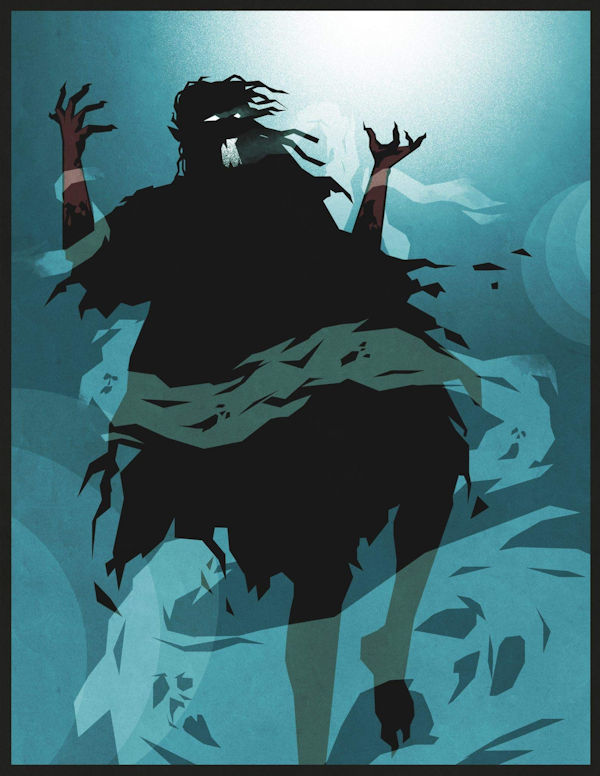 As you’d expect, this short supplement focuses on the nastiest types of occult magic in Spire. And magic in Spire was pretty horrible to begin with.
As you’d expect, this short supplement focuses on the nastiest types of occult magic in Spire. And magic in Spire was pretty horrible to begin with.
Blood Witch
Black Magic presents a whole new character class and, if you couldn’t tell by the name, they aren’t generally nice people. Blood Witches have been infected by the chaotic Heart of Spire with a mystical blood disease that grants them power even as it turns them into horrible monsters.
As well as having access to classic witch abilities like creating wards, having a familiar and cursing people with the Evil Eye, Blood Witches wield terror like a weapon and have a hideous, flickering nightmare of a ‘true form’ you will see if you injure or anger them. Other powers include spraying acidic blood, controlling people like puppets and forming a supernatural bond with their lair.
Blood Witches make for gruesomely entertaining Player Characters (PCs) and fun antagonists. Interestingly, for a creature devoted to blood they feel quite distinct from vampires.
Next, we have three new sets of Extra Advances.
Grangou
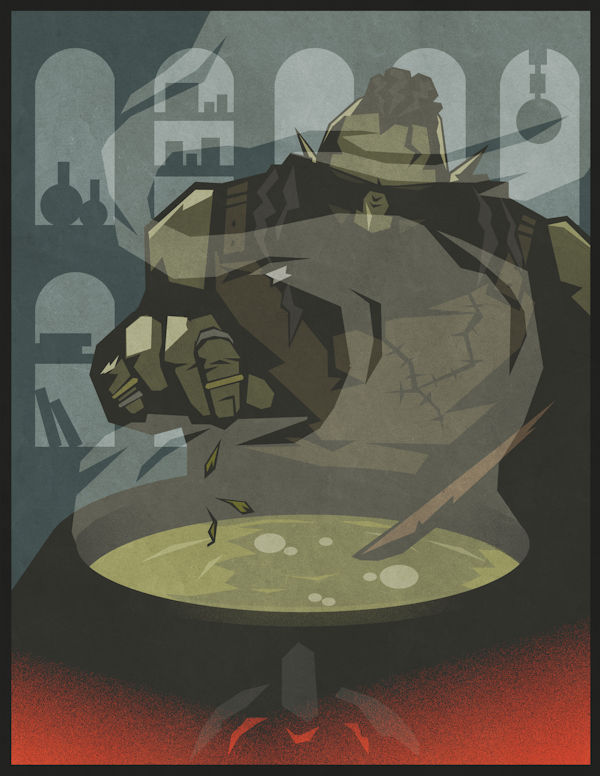 Grangou is an ancient form of drow magic based around cooking. It feels to me as though it was inspired by the spirituality and culture of places like New Orleans. Grangou are often the heart of their community and help everyone to get through lean times. Their weirdest Advance is the power to cook a corpse in their cauldron, feed the resulting stew to their guests and thus cause the corpse to return to life the next morning. Definitely something your players will remember, no matter how hard they try to forget!
Grangou is an ancient form of drow magic based around cooking. It feels to me as though it was inspired by the spirituality and culture of places like New Orleans. Grangou are often the heart of their community and help everyone to get through lean times. Their weirdest Advance is the power to cook a corpse in their cauldron, feed the resulting stew to their guests and thus cause the corpse to return to life the next morning. Definitely something your players will remember, no matter how hard they try to forget!
Deep Apiarist
The Heart of Spire is an actively malevolent force of unreality that threatens the entire city. The only sensible response is to transform yourself into a living hive for magical bees that will help you to fight back and contain the Heart’s evil influence. Listen to the wisdom of the bees, allow them to patch your wounds with soothing wax or harness the power of pattern recognition to play out a scene in your mind before taking action. (Yes, you can do the Sherlock thing.)
“REPAIR. [Occult] The bees that live inside you patch up your wounds with wax.”
(You can’t see this but I’m shivering as I type.)
Demonologist
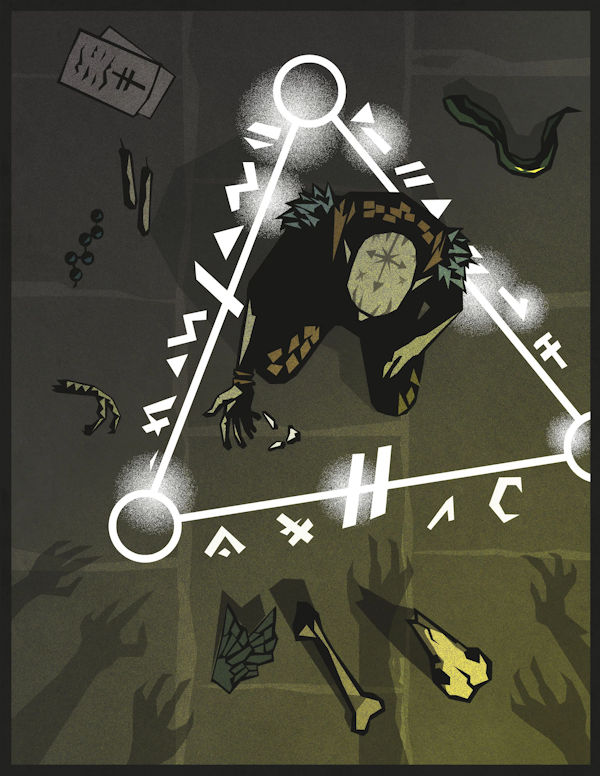 This
section is preceded by a description of how demons work in the setting of Spire
and what they might actually be. It includes some sample demons such as The
Labyrinthine, which controls travel and mazes and drives people mad with
endless twisted corridors and other ‘fun’ tricks.
This
section is preceded by a description of how demons work in the setting of Spire
and what they might actually be. It includes some sample demons such as The
Labyrinthine, which controls travel and mazes and drives people mad with
endless twisted corridors and other ‘fun’ tricks.
The upshot is Demonologists are terrible people who are probably doomed, unless they can find enough scapegoats or patsies to take the fall for them. And they have the power to level cities, though probably not on purpose. I’d say Demonologists make for better villains than Player Characters. Unless your group is really into playing out a spiral of self-destruction and horrendous consequences. (Which, in fairness, is a common theme in Spire.)
Occult Fallout
This section details a horrid handful of magical maladies ‘earned’ by those who practice or mess up occult magic. Some of these curses could spark entire storylines on their own as characters seek to remove their witchmarks or fight against the arcane fetch that is trying to replace them.
“FETCH. [Occult] A copy of you, bearing some but not all of your memories and mannerisms, is trying to sneak into your life and replace you. It is made of broken springs, animal bones and old clothes glamoured to look like you, and without specialist training and magic, few will be able to tell the difference between you and it. It will stop at nothing to permanently replace you.”
Overall, I enjoyed this supplement and found it inventive even by Spire’s standards. Though short at a mere twenty-four pages, it packs a lot in. Think of it as a lean and lithe predator just waiting to be unleashed on your campaign. Definitely worth it if you or your players want to lean into the horror or reality-warping strangeness of the Spire setting.
Eidolon Sky
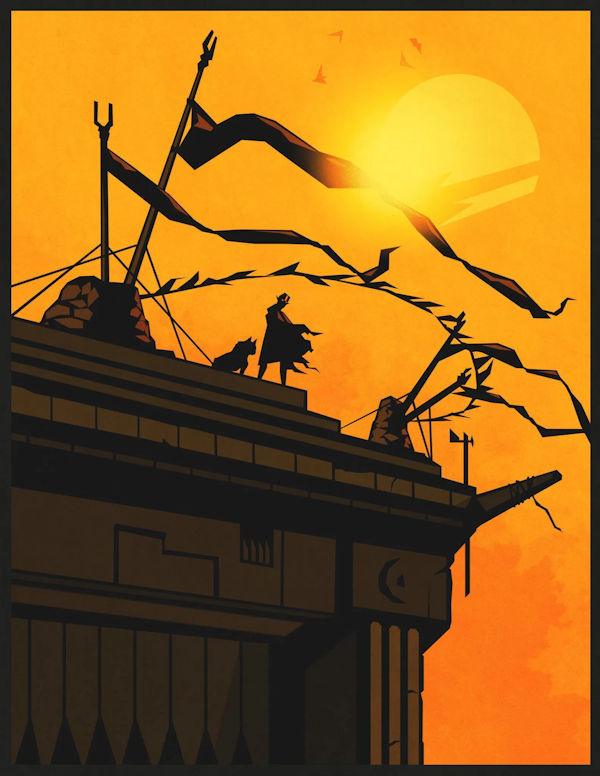 It’s worth noting that this adventure is available from Rowan, Rook and Decard’s website as a pay-what-you-want PDF. If you’re on a budget and want a taster of the setting and the authors’ writing style, then this might be a good place to start.
It’s worth noting that this adventure is available from Rowan, Rook and Decard’s website as a pay-what-you-want PDF. If you’re on a budget and want a taster of the setting and the authors’ writing style, then this might be a good place to start.
This campaign is set in the upper reaches of Spire but not in the posh bits. Instead, it focuses on the hyena-haunted heights of New Heaven and the precarious district called Perch, which is literally nailed to the side of Spire’s outer wall.
Eidolon Sky begins with a manifesto from the writers you’ll see is a common theme amongst adventures published by Rook, Rowan and Decard.
“Unlike many pre-written adventures you might have read before, we haven’t written a set series of events for the players to work through. Spire is an open-ended, character-led game by design, and we can’t predict what your players will do.”
The writers solve the issue in this case by providing three plot threads: a drug epidemic, an artful serial killer on the loose and a bunch of demonic artefacts being used for nefarious purposes. Each thread could be the starting point of the adventure and offers plot hooks such as the PCs’ Magister (handler) perishing beautifully at the hands of the killer known as The Swan. (I do like The Swan as a villain, he’s a deeply monstrous and flawed person, as you’d expect. He’s also dangerous, can be used to keep the plot on track and has a very distinctive style. His kills are examples of decadent art and tend to be decorated with glass feathers.)
Each plot thread contains write-ups for hostile non-player characters (NPCs) and descriptions of other difficulties the Ministers might encounter. There are also some neat little nuggets of information their investigations can uncover, which I appreciated.
A number of NPCs are offered up as the representatives of different factions that could take an interest in proceedings. Though you’re encouraged to only use a couple of them to avoid cluttering the campaign. These include a cheerful Mortician with a drinking habit, a gun-hating gangster, and a member of the Solar Guard who’s not really such a bad person, even though his Order are sworn to destroy The Ministry.
We then get a description of what the PCs will need to do or acquire to successfully complete the campaign. (And the likely result if they don’t.) We don’t actually get a full stat-block for the final villain, which seems like an odd oversight.
(As a side note. This adventure resolved one of the minor gripes I had with the core rulebook—the issue of NPCs being reactive and not getting to wield the same powers as PCs. The description of The Swan explains how to use his Idol powers against the PCs and even gave an example of doing so outside of combat. It then clicked for me, the game is perfectly happy for you to have villains doing things the PCs have to evade or resist, so long as the PCs are still driving the plot.)
Finally, we get six pre-generated characters, with full descriptions of their Advances (powers) and a plot-hook each to get them started on their investigation. I’d recommend this adventure. It’s got some fairly complex NPCs and plots to unpick and should be pretty memorable. It pairs very well with Black Magic.
Blood and Dust
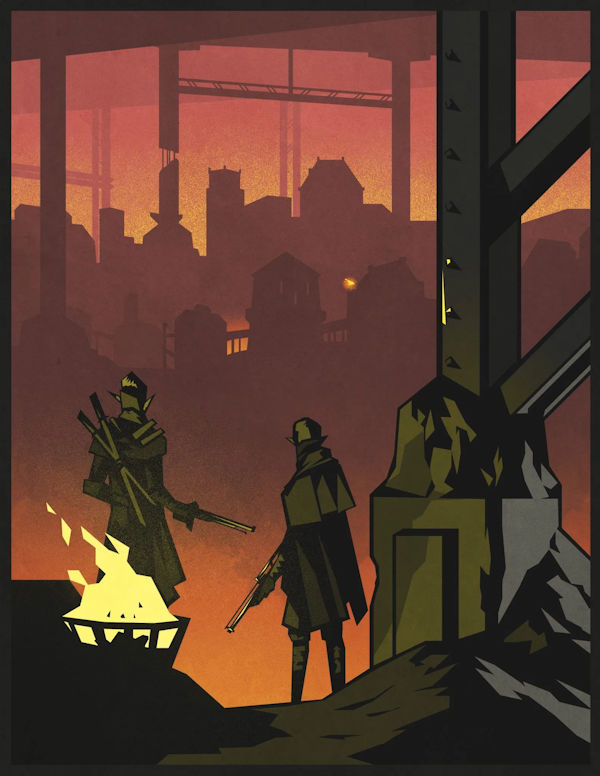 This adventure is also available as a pay-what-you-want PDF.
This adventure is also available as a pay-what-you-want PDF.
Though shorter, Blood and Dust follows a similar setup and design ethos as Eidolon Sky. It presents a situation, some factions, NPCs and pre-generated PCs and gives you a bit of advice on where to go from there.
Blood and Dust showcases the brutal, crime-ridden slum of Red Row and the reality-defying failed transit system known as the Vermissian Vault. Its plot includes a dangerous occult play, a street war and a general state of decay that seems to be afflicting all of Spire.
I particularly enjoyed the idea of the Vermissian Vault so was pleased to get the chance to explore it a little further. So, I’m happy to recommend this adventure on that basis alone.
Kings of Silver
 Also available as a pay-what-you-want PDF.
Also available as a pay-what-you-want PDF.
“Glittering and grimy, bloody and bright, the gaudy crown jewel of Spire—the Silver Quarter is ripe and ready to fall.”
Even for Spire, Kings of Silver is a very sandboxy kind of campaign with no clear direction. There are NPCs with their own plots and plans but it’s the PCs who are really going to shake things up and determine how events unfold.
The Ministers have been given a rundown casino in the Silver Quarter and told to use it as a base to take over the district. Meanwhile, aristocratic drow gangsters murder each other in the streets, a flamboyant aelfir looks to unseat her sister from the Council, and a guard captain is so tired of corruption and violence that she’s actually going to try to apply the law to everyone in the Silver Quarter, including aelfir and rich drow. And speaking of aelfir, one of them is even keener on revolution than The Ministry and he might just burn the whole district down if left unchecked.
This is a good adventure if you have confident players who like to come up with their own missions and dastardly plans. It would be a great way to transition Blades in the Dark players into a Spire setting.
I did feel this supplement could have done with more descriptions of the casino itself. What is a typical night like? Who are the regulars? How much money flows through it? Are the games the same ones we play in the real world or are there any weird Spire variants like poison roulette or tarot poker? What sorts of cocktail do the high rollers sip as they survey their cards?
Book of Masks
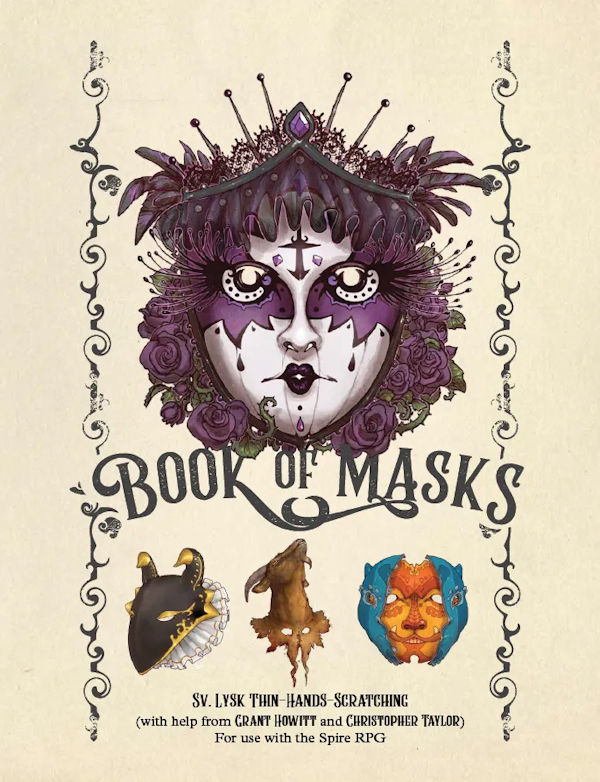 This is a short equipment book that details some masks available to the aelfir and the drow that serve them.
This is a short equipment book that details some masks available to the aelfir and the drow that serve them.
Each mask is described in an in-universe style as though it was an entry in an aelfir mask-catalogue. Then the author speaks directly—detailing the game stats of the mask, if any, and often pointing out downsides to the masks the aelfir brushed over. The contrast between the overwrought, unhinged and deceptive rhetoric of the aelfir and the more measured explanations of the author is quite entertaining.
The masks on offer range from the hilarious thunderhelm (it’s a gun you wear on your face!), to the horrific excision mask (it is your face! They peeled your face off and turned it into a mask and if you weren’t undead when they did it then the process will almost certainly kill you!).
I wouldn’t say this book was essential for running Spire. But it is beautiful. I’ve made no secret of the fact that I like Spire’s art style but the illustrations in Book of Masks are particularly gorgeous. Even though I already had the PDF I couldn’t resist buying a physical copy at Dragonmeet and have been using the illustrations in my current campaign.
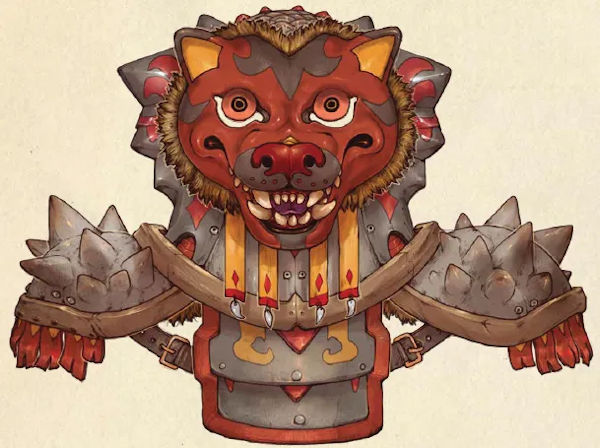
I also got to meet a couple of members of Rook, Rowan and Decard who were selling stuff in the Trade Hall at Dragonmeet. From them I learned the reason why goats have their own section in Spire: they like goats. And they thought goats would be much more practical riding animals in a giant tower-city than horses, who aren’t known for their skill at climbing stairs. So, now you know.
Strata
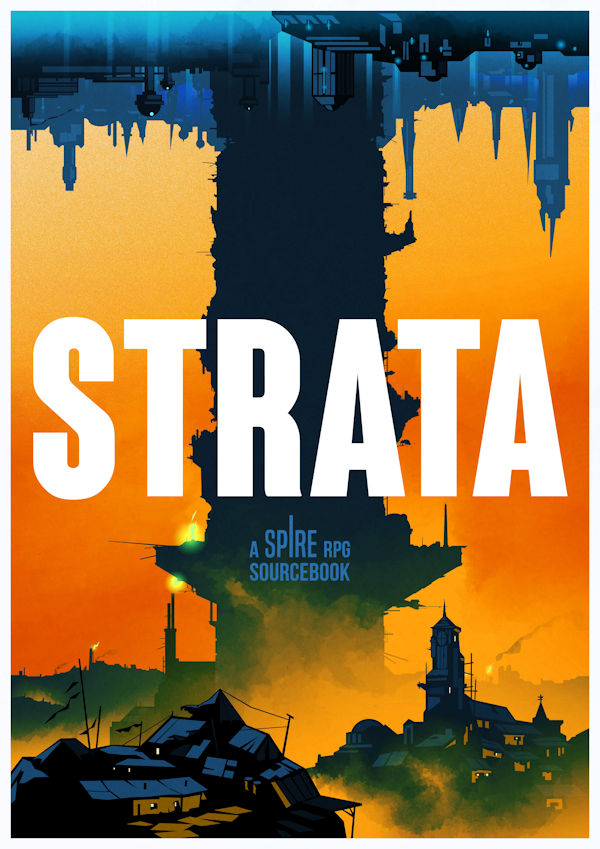 Strata is the main expansion book for Spire, it rivals the page count of all the other products in this article put together. Strata adds a couple of new classes, a bunch of new adventures and lots more information about the city of Spire and its denizens.
Strata is the main expansion book for Spire, it rivals the page count of all the other products in this article put together. Strata adds a couple of new classes, a bunch of new adventures and lots more information about the city of Spire and its denizens.
CLASSES
The Inksmith
A cunning and persuasive journalist or pulp writer who harnesses the occult power of the written word. Inksmiths can learn abilities like: being the person who gets invited to all the right parties, embodying the fears of those around them, summoning a man with a gun, or turning misfortune into good luck.
I absolutely love the picture of the Inksmith—a dynamically posed drow pointing a smoking gun off-screen and wearing an outrageous hat adorned with a red feather. She looks like a cross between a 1920s private eye and a French musketeer.
 Overall, a very fun class players will fall in love with. I certainly did.
Overall, a very fun class players will fall in love with. I certainly did.
Shadow Agents
Ministers who were blessed (if blessed is the right word) by The Hidden Mistress to lose their sense of self. Masters of disguise and deception to an unnatural degree, they can take on any identity they wish and inhabit various ‘covers’ that are almost separate people. They are rather like the Faceless Men from A Song of Ice and Fire.
Their Advances include such things as leaching the expertise of those around them, wielding a wicked dagger imbued with poison and shadows, stealing an identity from someone they just murdered and creating doppelgangers of themselves.
Shadow Agents get special Fallout options to reflect their ‘covers’ drawing unwanted attention, getting blown or compromised or even taking on a life of their own. It’s an interesting mechanic and I certainly enjoyed the idea of taking a Cold War style spy and making them into a supernatural being.
So, lore-wise it’s an interesting Class. However, given the Masked Class from the core book can already sneak around, impersonate people and even steal faces I’m not sure the Shadow Agent really needed to exist.
SETTING INFORMATION
High Society
Amaranth
 Amaranth is the preferred home of the high elves of Spire. It’s opulent, strange and extremely cold, just the way the aelfir like it.
Amaranth is the preferred home of the high elves of Spire. It’s opulent, strange and extremely cold, just the way the aelfir like it.
We gain some more titbits about aelfir culture in this section. There are references to the Everqueen, once an aelf and now an eternal monarch formed from ice and stone. She rules the aelfir homeland in the north.
Some aelfir commission a beautiful piece of art which no one else will ever see, contemplate it, then burn it and blind themselves, content in the knowledge they’ve seen all they need to see. Of course, they invite all their friends to witness the blinding. Other aelfir hold off old age by having themselves magically frozen. They are temporarily defrosted for special events and occasionally by accident, leading to the alarming sight of naked and befuddled aelfir elders from past eras running through the streets of Amaranth.
A few aelfir, desperate for illicit thrills, even sponsor drow resistance movements. Which would be an interesting way to complicate the lives of the PCs. But there’s always something weirder when it comes to Spire and particularly the aelfir. I’ll let the authors speak for themselves on that point.
“Some eschew the use of nouns entirely, seeing them as brutal and untrue concepts that limit one’s understanding of the universe;”
“Others still have had their vocal cords removed entirely and communicate only through music.”
Anything else before we move on? Oh yes. Strings of multicoloured hummingbirds carry messages through Amaranth. Some of the hummingbirds are insane. Because Spire.
The Silver Quarter
The Silver Quarter is where the drow nobility lurk in decaying mansions and skirmish with each other. As we learned from Kings of Silver it’s also a pleasure and gambling district.
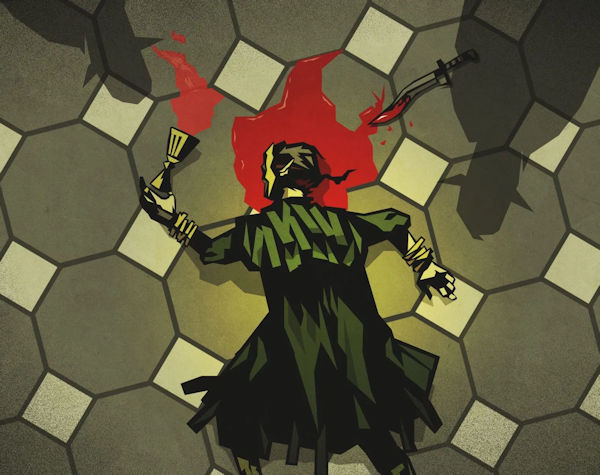
Once again Rowan, Rook and Decard show off their trademark mix of whimsy and thoughtfulness. A little aside talks about fashion, such as the way clothing trends trickle down through Spire, mutating as they go. There’s a few neat plot hooks here such as the guard captain who is actually doing her job and so is likely to end up with her throat cut.
The nine drow noble houses are explored here too. Each one providing a new Advance. One house, Aliquam—the repairers of reputations—is a nod to Robert W. Chambers and his Carcosa mythology. A touch that I appreciated.
Ivory Row
Three very powerful landlords have carved up Ivory Row and each one offers plot seeds to enterprising gaming groups. Catch an aelfir performing illegal experiments, raid a party or infiltrate a mysterious cathedral. Other highlights include an aelfir Minister!
The High Society section includes some other goodies. New equipment options, for those who can afford them. Elegant aelfir weapons, diaphanous armour and guns hidden inside surprising places, to name a few. Also Slivers: cursed acupuncture needles that grant mild superpowers if they don’t horribly maim you.
Oh, and the Songbow:
“So called because if fired correctly, the hollow arrows pluck the last breath out of the target and play it through fluted chambers as a beautiful, mournful song.”
There’s also a bit about the different art movements in Spire, that border on cult-like behaviour in some cases, and the weird occult Advances their proponents can unlock.
Some potential allies of The Ministry are also detailed in this section. A very welcome addition for players, I’m sure.
Low Society
The Works
 This area is a Steampunk’s nightmare made up of all the worst parts of the Industrial Revolution distilled into a single smoke-clogged district. Poisonous smog and industrial accidents kill hundreds of drow each month. The Works is another nicely evocative place to set your adventures and comes with the usual array of plot seeds.
This area is a Steampunk’s nightmare made up of all the worst parts of the Industrial Revolution distilled into a single smoke-clogged district. Poisonous smog and industrial accidents kill hundreds of drow each month. The Works is another nicely evocative place to set your adventures and comes with the usual array of plot seeds.
One snippet of information that could inform an adventure is the fact that a drow can make it in this district and more and more dark elves are rising to become factory owners. What would happen if the aelfir objected to this development, I wonder?
Another is the splinter group of Vermissian Sages who read newspaper clippings from alternate futures so they can predict and prevent fires. Only in Spire!
The Deep Works offers a more traditional horror or even dungeon-crawling experience as the PCs delve into abandoned factories that have been infested with who-knows-what in search of lost treasures. A helpful sidebar notes that Silver or Shadow Fallout could result in the cell being dispatched on this kind of mission by The Ministry. If your activities cost the revolution too much money it’s on you to make up the losses.
This section also includes magical weapons such as a knife that loves you and a different knife which cuts through relationships instead of flesh. And there are Advances associated with running your own newspaper. Including the ability to make an investigation map of names and places connected by bits of red string (it’s more helpful than it sounds).
The Gardens
A lush indoor farming district. Of course, even farming in Spire carries the risk of descending into madness and murder. There are predatory plants and druids with mad or malevolent plans and even stranger things.
“A grove of stone statues covered in predatory moss: it used to grow over sleeping or injured animals and sap their strength until they died, but it can be fooled with statues.”
Most interestingly, parts of The Gardens have been blocked off for so long that lost tribes or settlements of drow live within. These groups often have their own languages and customs, and some were not even aware of the conquest of Spire by the aelfir until their lost enclaves were rediscovered. How’s that for a character background?
Perch
 Perch is the, probably doomed, slum of Spire that is nailed to the city’s outer wall. This section contains some interesting details about the god-wrangling activities of members of the Bound Character Class. Including some very cool examples of small gods that can be bound into blades. My favourite is the kindly god of spiders, which is very depressed because no spiders are intelligent enough to worship it.
Perch is the, probably doomed, slum of Spire that is nailed to the city’s outer wall. This section contains some interesting details about the god-wrangling activities of members of the Bound Character Class. Including some very cool examples of small gods that can be bound into blades. My favourite is the kindly god of spiders, which is very depressed because no spiders are intelligent enough to worship it.
We also get a bunch of Perch superstitions, including the belief that Perch will fall if, among other unlikely events, the Knights of the North Docks ever reunite into a single order. This is a fantastic little setup for a battle between the Knights and the Bound.
Derelictus
 This district didn’t make much of an impression on me when I read about it in the core book. Strata changed that. Derelictus is an eerie twilight realm where daylight and the concept of measured time don’t really penetrate. The writers have really considered what a culture without a day and night cycle would be like, and how they would react to diurnal folk. The people of Derelictus live a vague and unfocused existence, freed from the chains of hours and days. They find those from beyond the district to be extremely fidgety and obsessed with getting things done quickly.
This district didn’t make much of an impression on me when I read about it in the core book. Strata changed that. Derelictus is an eerie twilight realm where daylight and the concept of measured time don’t really penetrate. The writers have really considered what a culture without a day and night cycle would be like, and how they would react to diurnal folk. The people of Derelictus live a vague and unfocused existence, freed from the chains of hours and days. They find those from beyond the district to be extremely fidgety and obsessed with getting things done quickly.
Also, Derelictus is slowly being eaten by the festering unreality of The Heart. It’s about the only place in Spire that might be a worse place to live than Perch.
Most of the rest of the book is taken up by a curious assortment of adventures and campaigns set in various Districts of Spire.
ADVENTURES
Eye of the Beholder
A particularly avant-garde (deranged) aelfir artist uses surgery to fix the faces of her drow servants into a single expression such as sorrow or glee. She intends to cement her position as an artistic ‘genius’ with a party/auction where she will display and sell off her creations. Another aelfir (actually a drow in disguise) takes exception to this brand of thoughtless cruelty and brings in the PCs to rescue as many of her ‘dolls’ as possible.
Eye of the Beholder is a complex and memorable heist adventure with lots of moving parts and chances for the players to try different angles. There are multiple groups of ‘dolls’ in different areas of the party and rescuing people from each group represents unique challenges. The writer describes the motivations and behaviours of every major character as well as anything the ministers could use as leverage against them, an excellent touch. Unlike many of the scenarios presented in this book it shouldn’t take too long to wrap up and can be dropped into most ongoing campaigns without trouble.
Home is Where the Hatred Is
 This scenario functions best as a mini-campaign or alternatively a starting point for a larger campaign. Your cell have spent a long time infiltrating a powerful aelfir family as their servants. You’ve suffered horrible abuses from your masters. Now is the time to strike, murder them all and create a power vacuum in aelfir high society. It’s as though The Help switched gears into The Purge halfway through its runtime.
This scenario functions best as a mini-campaign or alternatively a starting point for a larger campaign. Your cell have spent a long time infiltrating a powerful aelfir family as their servants. You’ve suffered horrible abuses from your masters. Now is the time to strike, murder them all and create a power vacuum in aelfir high society. It’s as though The Help switched gears into The Purge halfway through its runtime.
The author draws upon the words of Malcolm X at his angriest and most ruthless and warns the scenario is not meant to be easy or morally comfortable. Most of the aelfir family are self-obsessed and not particularly sympathetic. But one is notable for being harmless and conciliatory and never hurting anyone, which makes the idea of killing them very troubling.
One problem with this adventure as written is if the players did nothing at all, one of the aelfir characters would carry out their own plot that would result in a total massacre of the entire household. This renders everything the players do kind of redundant. I’d definitely change that if running this scenario.
Bisquiet
This is a ‘campaign framework’ that functions best as a stand-alone story. Although you could potentially condense it down into a starting adventure.
A modern bakery themed around traditional drow cuisine has opened in a decaying area of Spire and the aelfir adore it. Little do they know it’s a Ministry front. Your job is to make sure it stays that way and you’re probably going to fail.
This scenario genuinely attempts to simulate the day-to-day of working in a bakery where you could be betrayed at any moment. Certainly a…unique idea. But this is baking in Spire, which includes such jobs as sauce-wielder and yeast strangler, and can lead to symptoms such as bleeding from the lips due to smiling too hard or a desire to run and run until you pass off the edge of the city and tumble into space.
This scenario is likely to end badly for the PCs one way or another so even as a starting adventure it could be tricky. The only Spire adventure I can think of that follows easily on from this one is Dark Harvest and that, if anything, is even more likely to end badly for the PCs. Bisquiet might work better as a mini-campaign set between two longer campaigns. Though I just can’t see myself being able to sell my players on the idea of playing bakers. Your mileage may vary.
(That being said. “Ignais the yeast-strangler” is my new favourite NPC.)
The Fall of Glasshelm
 A ham-fisted but genuinely public-spirited attempt by a wealthy aelfir to improve the lot of the drow is causing havoc in Red Row. As the PCs investigate, they’ll discover a shadowy network of unwilling dreamers forced to create a virtual simulation of Spire. They may have to make a devil’s bargain with a Blood Witch or carry out a daring raid on a very powerful organisation to restore the status quo.
A ham-fisted but genuinely public-spirited attempt by a wealthy aelfir to improve the lot of the drow is causing havoc in Red Row. As the PCs investigate, they’ll discover a shadowy network of unwilling dreamers forced to create a virtual simulation of Spire. They may have to make a devil’s bargain with a Blood Witch or carry out a daring raid on a very powerful organisation to restore the status quo.
There’s a definite cyberpunk feel to this adventure, with shell corporations, city planning, virtual reality and mental viruses all thrown into the mix. It’s really cool and showcases the way Spire can simulate genres beyond fantasy. A great gateway adventure for players who are used to cyberpunk, sci-fi or modern games.
Better The Devil
This one’s definitely a campaign.
House Starys, the former royal family of the drow Home Nations, have returned to Spire and times are hard for The Ministry. House Starys were at least as cruel as the aelfir and their rise to prominence could be disastrous for drow everywhere. House Starys are definitely evil and definitely use the biotech artefacts called ‘slivers’ to control their subjects and grant themselves power, but otherwise their precise nature is up to the GM to decide.
This campaign frame includes some really nice new Fallout options such as having the last survivor of a smashed Ministry cell limping into your safe house. It’s also one of those Spire scenarios that can completely upend the setting.
The Forgotten
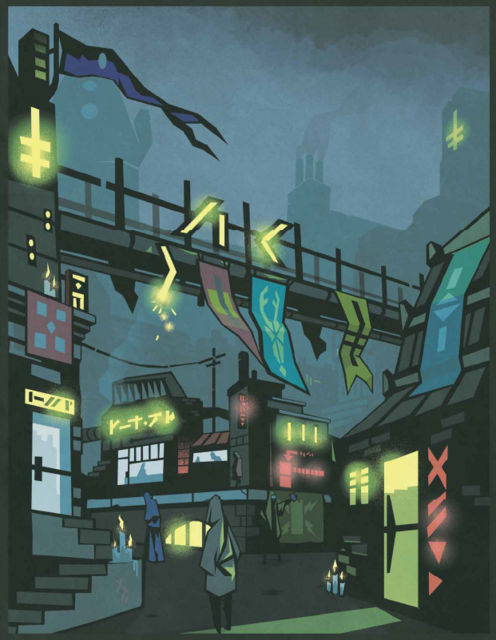 Set in the poverty-stricken and cult-ridden district of Pilgrim’s Walk, this adventure really leans into the theme of difficult moral choices—it paints The Ministry as more villainous than usual and offers players the chance to join it or defy it.
Set in the poverty-stricken and cult-ridden district of Pilgrim’s Walk, this adventure really leans into the theme of difficult moral choices—it paints The Ministry as more villainous than usual and offers players the chance to join it or defy it.
The PCs in this scenario are all disabled and, fair play to the writer, he reached out to the disabled RPG community to get information on portraying disabled characters sensitively. The central premise of the campaign is a plot by a ruthless Magister to destabilise a district at the expense of the least fortunate members of society.
An interesting feature of The Forgotten is the notes on playing human and aelfir characters. No doubt many players would relish the chance to try out the setting from a different species’ point of view.
Overall, definitely worth looking at for its innovations to the game and the unusual roleplaying challenges it offers.
Ironshrike
Ironshrike is a market in the desperate depths of Derelictus. This scenario presents the players with the novel challenge of killing that market.
This adventure offers a good set of NPCs and power players to deal with, including a self-loathing slum-lord, a cannibal king and an obsessive aelfir who regards Spire as a single vast system that she will one day understand in its entirety. There are some very weird items on sale as well, including a rat that eats curses. Also, there’s a cult of cannibal capitalism, because Spire.
I like this adventure, it presents some very original challenges, lots of room for the players to breathe and just enough information to inform without overwhelming.
Sulphurous Presses
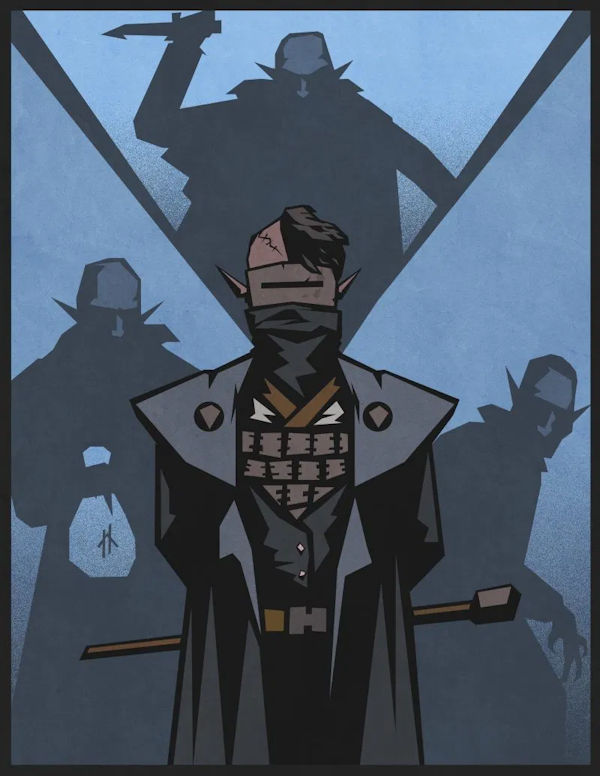 Set in the hellish manufacturing District known as The Works, this scenario tasks the Player Characters with creating their own newspaper and using it to undermine the establishment. Doing so risks riots, pogroms and military intervention from the aelfir.
Set in the hellish manufacturing District known as The Works, this scenario tasks the Player Characters with creating their own newspaper and using it to undermine the establishment. Doing so risks riots, pogroms and military intervention from the aelfir.
Players design their paper, including a name and editorial stance, and can gain Advances from it. Most of these abilities are fairly mundane, such as the ability to lean on sources or get scoops ahead of your rivals. But one Advance lets you publish an obituary so convincing that NPCs who meet that character believe them to be a ghost. And if your influence is strong enough the Morticians will correct the ‘mistake’ of the person technically still being alive.
There are some fun random tables as well, including one for generating the mad opinions of local citizens.
Dark Harvest
Set in an isolated part of the Garden District. This ‘quaint’ rural community uses human (drow), sacrifice to ensure a plentiful harvest. Pity your characters are using the village as a place to lay low after their last job went horribly wrong.
This is an eccentric little adventure that reads like a mashup of The Wicker Man and Hot Fuzz, or Midsommar by way of Midsomer Murders. There are lots of classic small English village characters—the gentle policeman, the arrogant landowner and so on, which should make the shift into folk horror all the more jarring for the players.
CULTS
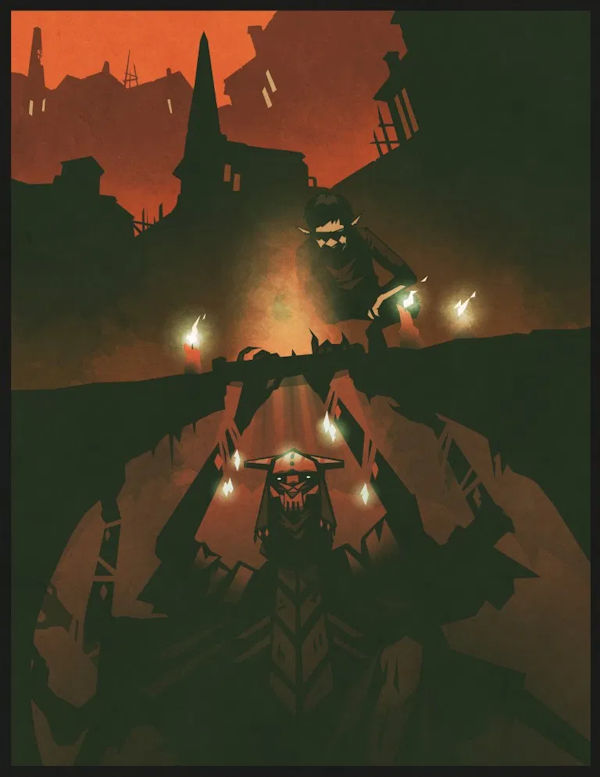 Strata is rounded out by descriptions of
several cults. One cult in particular is dedicated the destruction of evil
words. We’re not talking swear words here, we’re talking words so vile they
pose a threat to reality. Another cult is obsessed with locks, though whether
they want to open or close them depends on who’s in charge at the time. These
are quite niche groups who may not be hugely gameable but I find it hard to
object to another helping of bizarre Spire-ness.
Strata is rounded out by descriptions of
several cults. One cult in particular is dedicated the destruction of evil
words. We’re not talking swear words here, we’re talking words so vile they
pose a threat to reality. Another cult is obsessed with locks, though whether
they want to open or close them depends on who’s in charge at the time. These
are quite niche groups who may not be hugely gameable but I find it hard to
object to another helping of bizarre Spire-ness.
FINAL IMPRESSIONS
Strata adds several layers of detail to Spire’s already rich lore. Personally, I loved learning about this complex and curious world and if you enjoyed reading Spire then you’re going to love Strata because it’s more of that. Same high quality of writing and art and absolutely no sign the writers are running out of creativity. The District descriptions are loaded with plot hooks and cool little details that help to flesh out an already hypnotically intricate fantasy world. Admittedly, some people may be put off by all the extra information to absorb but those people probably won’t get through the core book in the first place. The two new classes are both fun and evocative, though the Inksmith stood out more to me.
Is Strata essential? Honestly, the core book offers plenty of roleplaying potential already and you can pick up three Spire adventures for free if you’re stuck on how to start a game set in this world. But the sheer variety and eccentricity of the adventures and new lore collected in Spire means that you have a far greater chance of finding a story that sparks your imagination if you pick up this book.
– – –
And that’s it. I definitely recommend you check out the world of Spire. I’ve spent more than two months delving into this gorgeous game and I can’t say I’ve emerged from its depths entirely unscathed. I’m a little wild-eyed these days, with a tendency to gibber at spiders and scream curses at anyone wearing a mask.
But in my lucid moments I am certain of one thing. I am a huge fan of this game and you should be too.
*Disclaimer*
I received free copies of all of the RPG products listed in this article in return for an honest review.


Thanks very much for the in depth review. Very useful to get an overall feel of the setting and you go into enough detail to know what it’s all about. I think this setting is strikingly original and deserves commercial success. There are many people who are time poor or not necessarily great at improv for which some more procedural adventures or campaigns would be very welcome. I imagine the creators would cringe at the thought, but it’s a rich world so I think there’s room for both.